#Kalapalo
Text
O Brasil e suas 170 línguas maternas
O Brasil é uma nação conhecida por sua riqueza cultural e diversidade. Essa riqueza não se limita apenas à música, dança e culinária, mas também se estende às línguas faladas por suas comunidades indígenas. No vasto território brasileiro, mais de 300 línguas indígenas foram identificadas, formando um mosaico linguístico único e intrigante que representa um patrimônio inestimável da nação.
As…
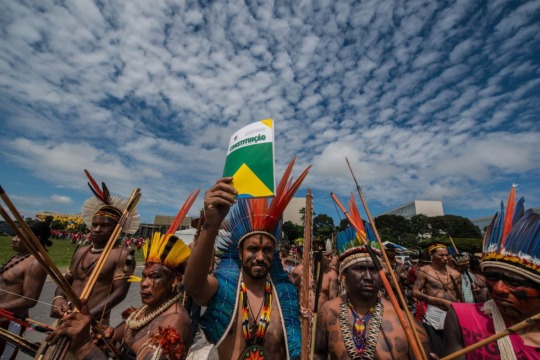
View On WordPress
#Bororo#Brasil Nativo#Comunicação Intercultural#Conexão Histórica#Conscientização Linguística#Cultura Indígena#Desafios#Dessana#Diversidade Humana#Diversidade Linguística#Etnias Indígenas#Guajá#guarani#Guarani Kaiowá#Guarani Mbyá#identidade cultural#Indígenas Brasileiros#Kaapor#Kaingang#Kalapalo#Kamayurá#Karib#Katukina#Kuikuru#Línguas Nativas#Macro-Jê#Maxakali#Pano#Patrimônio Linguístico#Preservação Cultural
2 notes
·
View notes
Text
Click the source link to find a downloadable gif pack of #20 gifs of Brazilian content creator Diamantha Aweti Kalapalo. She is Kalapalo so cast her respectfully.
These gifs are part of Native Month 2022, where I’ll be releasing packs of Native fcs from Nov. 1st-30th. This project was inspired by @olivaraofrph. You can find all the packs by searching /tagged/native2022 on my blog.
If you find these useful, consider buying me a coffee here, but these are available regardless.
These fit @tasksweekly tasks: #015: Indigenous Peoples of The Americas, #063: Brazil

14 notes
·
View notes
Note
Hi, there! Could you help me find indigenous Brazilian faceclaims who could pass as under 30, please? Any gender would work! Thanks in advance.
PS.: I believe what is called peoples in Brazil is called Nation in the US, and regarding that, I wished to move away from the idea that the only indigenous peoples in the country are in the north/central-west regions, which is very much not true! So I do have a slight preference towards fcs from peoples whose territory are around south/southeast/northeast? But I'm fine with any fc you can suggest, truly! I don't need them to have proper resources, if they have a good amount of photos and/or footage that would suffice, but I know that too can be pretty hard to find.
Alex Pereira (1987) Brazilian [Pataxó].
Samela Sateré-Mawé (1996) Brazilian [Sateré-Mawé].
Tukumã Pataxó (1998/99) Brazilian [Pataxó].
Zahy Guajajara (1989) Brazilian [Guajajara].
Adanilo (1990) Brazilian [Zo'é].
Dickson Tatuyo (2001) Brazilian [Tatuyo].
Dandara Queiroz (?) Brazilian [Tupi].
Diamantha Aweti Kalapalo (?) Brazilian [Kalapalo].
Romanã Waiãpi (?) Brazilian [Waiãpi].
Isabela Santana (?) Brazilian [Pataxó].
Zaya Guarani (?) Brazilian [Guajajara, Kamorapi, Guarani Mbya].
Unspecified:
Lais Ribeiro (1989) Brazilian [African, Unspecified Indigenous, Portuguese].
Emanuela de Paula (1989) White Brazilian / Afro Brazilian - has also stated that she's Indigenous.
Daniel Matsunaga (1988) Brazilian [Portuguese, African, Unspecified Indigenous] / Japanese.
Emanuela de Paula (1989) Brazilian [Portuguese, African, Dutch, Unspecified Indigenous].
Bruna Tenório (1989) Brazilian [Unspecified Indigenous, European].
Marlon Teixeira (1991) Brazilian [Portuguese, Unspecified Indigenous, one quarter Japanese].
Bruna Linzmeyer (1992) Brazilian [Portuguese, African, Unspecified Indigenous, possibly other] / German.
Camila Mendes (1994) Brazilian [Portuguese, Unspecified Indigenous, likely Italian and other].
Valentina Sampaio (1996) Brazilian [African, Dutch and Unspecified Indigenous] - is a trans woman.
Dalila Bela (2001) Panamanian / Brazilian [Spanish, Portuguese, and some Unspecified Indigenous and African].
If anyone has any suggestions please let me know and I can update ASAP!
8 notes
·
View notes
Text
O kukahujehetilü não é um estado mental, ele define uma relação entre a ética kalapalo e as relações cosmológicas entre os Kalapalo e os itsekeko. O estado de kukahujehetilü não é da ordem do pensamento, após o encontro da pessoa com um itseke, o que pode resultar em doença, a primeira se vale do conceito como explicação para o acometimento pelo itseke. Digamos que o kukahujehetilü é caracterizado por uma falta relacionada a um desejo não satisfeito. Os itsekeko são capazes de perceber essa dissociação dada nas pessoas, para assim acometêlas. O estado kukahujehetilü, assim, faz parte da percepção dos itsekeko, e não dos Kalapalo – isto é, um kalapalo não percebe que um outro kalapalo está kukahujehetilü. Esse conceito não designa a doença, mas é a sua precondição. Ele também se associa ao ethos kalapalo: a temperança e o autocontrole dos desejos. “Não se deve desejar aquilo que não está ao alcance imediato daquele que deseja, ou seja, todo desejo saudável deve ser passível de ser satisfeito” (Mello, 2005, p.69) – afirma a autora a respeito de um dos itens do ethos altoxinguano a partir de etnografia entre os Wauja. O estado de kukahujehetilü é, pois, tanto um princípio ético de orientação da conduta da pessoa quanto um princípio cosmológico que se define em termos de uma abertura que se cria entre a vida cotidiana dos Kalapalo e o perigoso mundo dos itsekeko. O kukahujehetilü aponta, assim, para uma integridade moral e para uma integridade cósmica
- J. Veridiano, Xamanismo Kalapalo
0 notes
Photo







Kalapalo people, Brazil
The Kalapalo are an indigenous people of Brazil. They are one of seventeen peoples who inhabit the Xingu National Park in the Upper Xingu River region of the state of Mato Grosso. They speak the Amonap language, a Cariban language, and are one of four peoples speaking languages in this family in the area. They have a population of 569 as of 2010.
Before the creation of the Xingu National Park in 1961, the Kalapalos lived at the confluence of the Tanguro and Kuluene, which are tributaries of the river Xingu. Since then, the Brazilian government has convinced them to settle near the Leonardo station, where medical treatment was made available. However, they frequently return to their former villages where they can grow cassava and cotton and where they can gather shellfish for art and craft-making purposes.
The Kalapalos have a strict code of ethics established by them that distinguish them from other peoples inhabiting the Upper Xingu. They all collectively share their culture as their fishing. Any public quarrels and fights are a serious violation of their code and are punished. They refrain from hunting land animals for fur by simply eating aquatic animals including fish.
402 notes
·
View notes
Photo

Pôr do sol na aldeia Ahía no Xingu. #xingu #kalapalo #pordosol #sunset #colorphotography Foto 📷 @ricardostuckert Abrace a Terra ❤️ 🌍 #Natureza #beautiful #happy #cute https://www.instagram.com/p/CHQ08XHB9yR/?igshid=118lhz7a34o63
0 notes
Text
Indigenous leaders flags Bolsonaro's team for UN talks
It’s an attempt to provide legitimacy to the controversial policies of the government that caused much harm to the environment, especially the Amazon

Representatives of several indigenous peoples have rejected President Jair Bolsonaro government’s move to include an indigenous woman to participate in the United Nations General Assembly in New York City on September 24, 2019.
The woman, Ysani Kalapalo, does not represent the Kalapalo people (one of the indigenous communities of Brazil) and her inclusion without the consent of the leaders is a disrespect to the autonomy of indigenous peoples in the country, according to a statement signed by chiefs of 16 the indigenous communites, Xingu indigenous territory of Mato Grosso, on September 21.
The move is also an attempt to provide legitimacy to the controversial policies, adopted by Bolsonaro, which caused much harm to the environment, the climate and indigenous rights, especially the Amazon, they claimed. Further, they also alleged that Kalapalo regularly makes defamatory statements about indigenous peoples on social media.
“The Brazilian government offends the indigenous leaders of Xingu and Brazil by highlighting an indigenous woman who has been constantly working on social networks with the sole purpose of offending and demoralising Brazil's indigenous leaders and movements,” read the letter.
Continue reading.
#brazil#Brazilian politics#indigenous rights#environmental justice#environmentalism#politics#united nations#united nations climate summit#jair bolsonaro#ysani kalapalo#kalapalo people#mod nise da silveira
20 notes
·
View notes
Text
MAG133 - Caso #9302706 - “Cavallo Morto”
[Episodio precedente]
[INT. ISTITUTO MAGNUS, ARCHIVI, UFFICIO DI JON]
[CLICK]
DAISY
Ne sei sicuro?
ARCHIVISTA
(sorpreso) No, uh, va, um - va bene.
DAISY
È solo che - Basira ha da fare.
ARCHIVISTA
No, i-io capisco. O-Onestamente, uh, apprezzerei abbastanza la tua opinione, uh, su questa qui. Solo - sai. Rimani in silenzio durante la dichiarazione e tutto il resto.
DAISY
Certo. P-Posso rimanere in silenzio.
ARCHIVISTA
Okay. Uh, oh - vuoi una sedia?
DAISY
No.
ARCHIVISTA
Oh. Okay.
DAISY
(Prova a spiegare) Sto cercando di farmi tornare le gambe come prima.
ARCHIVISTA
Oh, (duh) Ma certo.
DAISY
Ignorami e basta. Me ne starò in piedi nell’angolo.
ARCHIVISTA
(inspira) O...kay allora. Dichiarazione di... (si schiarisce la gola)
Dichiarazione di Percy Fawcett riguardo alla sua ultima spedizione in Amazzonia. Dichiarazione originale rilasciata il 27 luglio, 1930. Registrazione audio di Jonathan Sims, l’Archivista.
Inizio della dichiarazione.
ARCHIVISTA (DICHIARAZIONE)
Non dite a nessuno che sono vivo. Non posso essere più chiaro a riguardo. Non provate a trovarmi dopo che me ne sarò andato. Vi prego. Chiedo solo che mi sia concesso di vivere quel che resta della mia vita nell’ombra e nell’anonimato.
Non mi concederò di essere trovato.
Forse avrete letto articoli sulla mia scomparsa o morte, che ricostruiscono folli teorie su violenza alle mani delle tribù dei Kalapalo, o sulla mancanza di provviste o preparativi adeguati. Posso solo desiderare che la mia arroganza fosse stata così banale.
Ero di nuovo alla ricerca della città perduta di Z. L’ho sognata per decenni, da quando lessi la descrizione di da Silva sulla sua scoperta nel 1753.
Le rovine antiche, le statue, i geroglifici. L’assoluta bellezza senza rivali di tutto quanto. Nelle trincee e nel fango, sul fronte occidentale, fu il pensiero di Z a sostenermi, sussurrandomi promesse di scoperte. I resti di una città antica, completamente perduta nel tempo e nascosta da qualche parte vicino al fiume Xingu.
La mia prima spedizione fu da solo, tranne che per una manciata di guide indigene. Mi ero creduto preparato, ma la realtà di quella giungla fu molto peggio di quanto avessi potuto prevedere, e quando alla fine giunse a termine, la mia mente confusa dalla febbre battezzò quel punto, il più profondo della giungla che eravamo riusciti a raggiungere, ‘Campo del Cavallo Morto,’ perché fu lì che alla fine il mio cavallo cedette.
Mi ritirai sconfitto, deciso a tornare al Campo del Cavallo Morto quando sarei stato veramente pronto. Quel momento è stato cinque anni dopo, nel 1925, e credevo onestamente che quella volta sarei riuscito a trovare Z. Ero molto preparato, e soprattutto, avevo pianificato di non andare da solo.
Gli Xavante, nel cui territorio saremmo entrati, erano descritti come violenti e diffidenti, rendendo una spedizione numerosa poco saggia, quindi invece ho convinto a venire mio figlio Jack, in quanto aveva già viaggiato con me prima di allora, e mi fidavo dei suoi istinti quasi quanto dei miei.
Lui, a sua volta, aveva richiesto che includessi un altro nel viaggio, un suo amico di vecchia data e confidente: un uomo di nome Raleigh Rimmell.
Non mi è mai piaciuto l’aspetto di Raleigh. Era alto, e i suoi lineamenti, anche se sarebbero tutti potuti essere definiti belli, erano disposti male sul suo volto, dandogli un aspetto che ammetterò avere preso in antipatia sin dal nostro primo incontro. Soprattutto, aveva letto anche lui il Manoscritto 512, e potevo vedere nei suoi occhi lo stesso desiderio di trovare la città di Z che a volte coglievo nei miei.
Ma nei suoi c’era anche qualcos’altro, dietro ad essi. Qualcosa di più oscuro, che non riconoscevo, e anche adesso sono riluttante a considerare troppo a fondo. Ma Jack pensava che fosse il caso di invitarlo, e mai prima d’allora avevo avuto ragioni per dubitare il giudizio di Jack su cose del genere.
È stato Raleigh a suggerire che procedessimo da soli dopo che avevamo lasciato il Campo del Cavallo Morto. Questa volta mi ero assicurato che saremmo stati ben forniti. Avevamo cavalli, cani, muli, e un paio di lavoratori locali, che avevano acconsentito a farci da guide. Ma al nostro arrivo al campo, Raleigh li ha mandati via, e ha iniziato a spostare tutte le nostre provviste su solo una parte degli animali.
Ci ha detto che avremmo dovuto essere veloci se volevamo trovare quello che stavamo cercando, e non avremmo potuto esserlo con una carovana di animali dietro di noi.
Usava molto quella parola, ‘veloci.’ Ho provato a spiegargli che una ricerca metodica sarebbe stata più efficace, ma lui continuava semplicemente a borbottarla. Alla fine ho ceduto. Per quanto Raleigh non mi piacesse come persona, ha esposto (Sospira) diverse buone ragioni sulle nostre possibilità di evitare ogni tipo di confronto diretto con gli Xavante, e Jack è stato veloce a far sentire il suo supporto.
Quindi è stato alla fine di maggio, che io, Jack e Raleigh ci siamo spinti nella giungla più profonda. Da soli.
Quella notte le zanzare erano implacabili, cariche di febbre, e assetate del nostro sangue. Ho fatto del mio meglio per ignorarle e basta, da dove mi trovavo al sicuro dentro la mia rete. Ma nella tenda di Raleigh continuavo a sentire ogni tanto dei colpi, dei battiti, come se stesse cercando di ucciderle a mani nude. Quando ho fatto delle domande sulla cosa il giorno seguente, lui mi ha detto semplicemente di avere dentro di sé un forte odio persistente per i succhia-sangue.
Jack ha annuito, come se la dichiarazione fosse stata in qualche modo profonda, ma non sapevo che cosa dire al riguardo.
Quello è stato il giorno in cui abbiamo trovato la pietra. Mezza sepolta, consumata dal tempo e dalle intemperie quasi al punto da essere liscia, ma ancora chiaramente ricoperta dagli stessi i geroglifici che avevo visto nel manoscritto di da Silva.
Ero così felice, che ho quasi iniziato a piangere: avevo ragione.
Jack mi ha dato una pacca sulla spalla e ha iniziato a fare degli schizzi dei simboli. Raleigh era silenzioso, fissava la nostra scoperta con uno sguardo che non avevo mai visto prima. Non ha sbattuto le palpebre per quasi due minuti. Poi, gradualmente, con precisione, ha abbassato la testa fino a che la sua faccia non era proprio accanto alla superficie di pietra grezza. Ha fatto diversi respiri profondi, come se stesse annusando la cosa. E poi ho pensato di aver visto la sua lingua schizzare fuori, solo per un istante, a sentire l’aria vicino a questa.
Senza una parola, ha iniziato a correre nella giungla a rotta di collo. Io e Jack, spiazzati per un secondo, lo abbiamo seguito velocemente. Raleigh era veloce, ma la superficie irregolare della giungla e il terreno rendevano spostarsi molto difficile, quindi siamo riusciti a tenerlo in vista fino a che non si è fermato di colpo.
L’ho raggiunto, senza fiato per la stanchezza, e gli ho chiesto che cosa nel nome di Dio pensasse di fare.
“Siamo vicini,” ha detto. “Posso fiutarlo. Non lo lascerò sfuggire di nuovo.”
Gli ho detto che non capivo, che stavamo cercando le rovine di una città, che non potevano sfuggire. Ma Raleigh si è ripetuto e basta: “Posso fiutarlo,” e con mio sgomento, ho visto Jack annuire.
Questo è stato il punto in cui le cose hanno iniziato a cambiare, e la mia memoria a frammentarsi. Tenevo un diario, ma le note… erano sporadiche. E tremanti.
Le date non avevano più alcun senso; a un certo punto mi sono accorto che non c’erano più animali intorno a noi, che la foresta Amazzonica era diventata stranamente silenziosa. Ma non so se questo sia stato prima o dopo che ho trovato il mucchio di uccelli morti nella tenda di Raleigh. Deve essere stato prima, ma il mio diario non è chiaro sulla cosa. Quello che so è che ci siamo addentrati sempre più nel profondo della giungla. Jack aveva preso controllo della bussola e del sestante a quel punto, e non avevo pressoché idea di dove stessimo andando davvero.
Raleigh non dormiva più, di questo ne ero sicuro, e l’inconveniente di preparare il campo stava chiaramente iniziando ad irritarlo.
Non avevo più alcuna paura d’incontrare gli Xavante, in quanto sapevo in qualche modo che, ovunque ci trovassimo, non era più un territorio che loro avrebbero voluto reclamare.
C’erano altri animali, adesso. Riuscivo solo a vederli sempre di sfuggita. Ma non erano gli uccelli, o i muli, o nessuna delle altre vittime di Raleigh. Erano troppo svegli per quello.
E ci stavano sicuramente seguendo.
Quando abbiamo incontrato la seconda spedizione, sembrava come se io fossi l’unico sorpreso. Erano quasi una dozzina, muniti di abiti da clima freddo ed equipaggiamento per rompere il ghiaccio, e non sembravano far caso al pesante calore umido della giungla. Ci avevano accolti come vecchi amici, e Raleigh ha iniziato a chiedere loro che cosa avessero trovato, come stesse andando la loro ricerca, in quanti ce l’avessero fatta.
Ho provato a dire qualche parola, ma a questo punto ero così disorientato, così lontano da qualsiasi sentiero la spedizione stesse seguendo, che anche se loro sono riusciti a sentirmi, era chiaro che non avessero alcuna intenzione di ascoltarmi. Il capo della seconda spedizione, un uomo in uno spesso giaccone di pelle di foca, stava parlando con zelo del loro progresso, della loro caccia alla ricerca del Passaggio a Nord-ovest, e io mi sono reso conto con un sobbalzo che quell’uomo era John Franklin, il famoso esploratore dei poli, le cui navi, la Terror e la Erebus, rimasero intrappolate nel ghiaccio e disperse nel Canada del Nord. Gli equipaggi erano spariti, e molti credevano che fossero ricorsi al cannibalismo.
Ovviamente, quella mi sembrava una preoccupazione di gran lunga minore al momento, dato che la spedizione di John Franklin aveva avuto luogo quasi cento anni prima.
Non era possibile che queste persone fossero reali, non era possibile che si trovassero qui. Ma erano abbastanza solide, e il bagliore e l’ossessione nei loro occhi riflettevano perfettamente quelle di Raleigh. Jack guardava entrambi con ammirazione.
Siamo stati per poco in quattordici, poi le cose che ci avevano seguiti hanno attaccato di notte. Mi sono svegliato con urla e colpi di pistola, l‘odore del sangue e della morte. Qualcosa di più astuto di un giaguaro ha dilaniato la mia tenda, i denti desiderosi di trovare la mia gola. Ed era solo la mia paranoia, verso gli altri membri della spedizione allargata, che mi aveva fatto tenere il mio revolver abbastanza vicino da farmi sopravvivere alla lotta.
Quando era finita e le bestie erano morte o scacciate, ho sentito un suono che mi ha agghiacciato molto più delle urla orribili dei predatori: l’esultanza dei sopravvissuti inebriati dal sangue, un suono di trionfo, esaltazione, e crudeltà. Eravamo rimasti in sei, e ho ricaricato la mia pistola prima di tornare a letto.
Il mondo cambiava con ogni giorno che marciavamo avanti, dando la caccia febbrilmente a una destinazione della quale non ero più sicuro.
Raleigh non aveva menzionato la città di Z per giorni, e a nessun punto Franklin ha indicato altra destinazione se non il Passaggio a Nord-Ovest, anche se stavamo camminando nel cuore del Brasile.
E ora gli alberi stessi sembravano sentirci, rami e tronchi si piegavano dall’altra parte mentre passavamo, tranne per quelli che si facevano più affilati e si allungavano verso di noi. C’erano cose adesso che si muovevano tra gli alberi che sembravano uomini, ma non si muovevano come tali. Le loro bocche non si aprivano mai, ma sapevo che in loro c’era qualcosa di terribile.
C’era un’assurdità grottesca in tutto questo, e a volte pensavo che sarei potuto scoppiare in una risata, anche se sapevo che questa si sarebbe trasformata velocemente in singhiozzi, e io sarei stato esposto. Avevo sentito che l’opzione più sicura per me era di fingere la stessa ossessione che attanagliava Raleigh, che aveva preso mio figlio. Anche se entrambi sembravano avere le idee chiare su che cosa stesse succedendo di preciso, non mi hanno fatto troppe domande se sembravo condividerle.
Nonostante tutte le mie abilità d’orientamento e cartografiche, non avevo la minima idea di dove ci trovassimo. In certi momenti, la posizione del sole faceva addirittura sorgere dubbi su per quale continente stessimo viaggiando. Abbiamo trovato Eduard von Toll qualche giorno dopo. L’ho riconosciuto immediatamente, in quanto era sempre stato per me una fonte d’ispirazione, fino a quando la sua nave, la Zarya, svanì mentre era alla ricerca della misteriosa isola polare di Zemlya Sannikova. Ora, lui e il suo equipaggio stavano inchiodando le cose che sembravano uomini agli alberi, con lunghe aste di ferro. Quelle si dimenavano, e si dibattevano, e una lunga lingua bulbosa pendeva dalle loro gole, inchiodata dal ferro degli uomini di von Toll.
“Non sopporto i succhia-sangue,” ha detto Raleigh con approvazione, mentre chiacchierava a bassa voce con il Barone von Toll in francese.
Due delle figure inchiodate agli alberi hanno urlato per il dolore. Loro non avevano una lingua, niente stomaco rigonfio di sangue rubato. Ma nessuno sembrava farci caso, o se lo avevano notato, non gliene importava niente. Nella gioia della caccia, erano stati catturati. E questo era quanto.
E quindi la spedizione è ripresa nuovamente, con nessun segno di progresso o destinazione precisa, solo con pura concentrazione e il fervore selvaggio di trovare… Quello. Qualsiasi cosa fosse ‘Quello,’ ovunque ‘Quello’ si trovasse, non si sarebbero fermati, non si sarebbero mai fermati fino a che Quello non sarebbe stato trovato e preso.
Le nostre provviste erano finite giorni prima, e stava diventando evidente che lo zelo ti può sostenere solo per un determinato periodo, mentre uno o due del gruppo hanno iniziato a vacillare e a cadere per la stanchezza e per la fame. Sono stati semplicemente lasciati indietro.
La parte più dolorosa è stata Jack, che passava ore camminando accanto a me, raccontandomi di tutte le meraviglie che avremmo visto, tutte le gioie a cui avremmo preso parte, quando alla fine avremmo trovato Quello. O perso Quello. O ucciso Quello. Qualsiasi cosa fosse Quello. Mi ha spezzato il cuore vedere che cosa gli ho fatto, sapere dove la mia strada lo aveva condotto.
Quando alla fine ho lasciato che il mio corpo cedesse, è stato un sollievo quasi troppo intenso da descrivere. Sono caduto, e loro mi hanno lasciato indietro.
Mi sono risvegliato di nuovo al Campo del Cavallo Morto. Alcuni dei Kalabolo mi avevano trovato privo di sensi nella foresta e avevano avuto pietà di me. Non vi annoierò con i dettagli delle mie febbri e sofferenze, se non per dire che la nevrosi causatami dalla Grande Guerra non è stata niente a confronto con quello che ho passato dopo il mio ritorno.
Sono stato attento, però. Nessuno sa che sono vivo, e desidero disperatamente che rimanga così. Sono sicuro, nel profondo di me stesso, che quello a cui Raleigh Rimmell dava la caccia nel cuore della giungla lui non lo troverà mai. Non potrà mai trovarlo.
Quello che quelle persone inseguivano, quello che io inseguivo, non esiste, e spero davvero che nessun altro debba mai soffrire per la nostra ossessione. Prima il mondo si dimenticherà di loro, si dimenticherà di me, meglio è. Desidererei solo non aver perso mio figlio per imparare quella lezione.
ARCHIVISTA
Fine della dichiarazione.
(pausa, un respiro profondo) Che cosa ne pensi, allora?
DAISY
Non so. Perché?
ARCHIVISTA
Oh, beh.. sei una uh, sei una Cacciatrice, no? Non -
[Daisy sospira a denti stretti alle sue ultime parole]
ARCHIVISTA
Io - me lo stavo solo chiedendo. Stavo cercando le prove di un, un rituale della Caccia. Per vedere se fosse uno dei rituali che Gertrude ha interrotto. E questa è stata la cosa più simile che sono riuscito a trovare.
DAISY
Sarebbe potuto esserlo. Credo.
ARCHIVISTA
Ma non ha funzionato. Non so neanche come avrebbe dovuto funzionare.
DAISY
No.
ARCHIVISTA
Ma perché? Non c’è stata alcuna interferenza dall’esterno, nessun altro potere; anche le tribù indigene che avrebbero potuto teoricamente deragliarlo sembrano essersi tenute a distanza. Allora perché non ha funzionato?
DAISY
Non - credo che fosse quello il punto.
ARCHIVISTA
Non sono sicuro di capire.
DAISY
È solo una sensazione. Quando ero - (cerca le parole giuste) Sai quale era la parte che mi piaceva meno di un caso?
ARCHIVISTA
Le cause per abuso di potere?
DAISY
(Fa un sospiro esagerato simile a una risata) Arrestarli. Odiavo le manette, il, il click. Voleva dire che l’inseguimento era finito, che la caccia era finita. Soddisfacente, quando era una buona giornata, certo, ma che mi portava a volerne di più. Non volevo mai davvero che finisse.
ARCHIVISTA
Hm. (Inspira) Non pensi che la Caccia lascerebbe il suo rituale finire. Non pensi che gli lascerebbe trovare il - compimento.
DAISY
Non so. Forse? A volte perdevo la motivazione perché mi facevo coinvolgere troppo. Gli lasciavo delle vie di fuga solo perché volevo continuare a inseguirli. Come con te.
[L’Archivista fa hm]
DAISY
A volte (sospira) voleva dire che io perdevo.
ARCHIVISTA
Uh, uno dei frammenti che sono riuscito a decodificare dagli appunti di Gertrude - faceva riferimento a qualcosa che lei chiamava l’, uh, l’Eterno Inseguimento.
[Mentre parla, in sottofondo, il respiro di Daisy si fa un po’ più pesante]
ARCHIVISTA
Pensi che potrebbe essere così, il, il rituale che non finisce mai, perché la Caccia consiste nell’inseguimento.
DAISY
Io-Io non so. Sei tu l’esperto.
ARCHIVISTA
(Sovrapponendosi) No, no. M-M-Mi piace; è una, è una buona teoria.
DAISY
Basira ha detto che puoi semplicemente - sapere tutto questo ora, comunque.
ARCHIVISTA
(Sospira) Già, è - io-io non posso proprio controllarlo.
[La porta si apre.]
ARCHIVISTA
Oh.
BASIRA
(Sorpresa) Hey. Eccoti qui. Dovresti essere a fare i tuoi esercizi.
DAISY
Eri fuori.
BASIRA
Avresti potuto farli da sola.
[Una breve pausa.]
DAISY
Certo.
ARCHIVISTA
Tutto bene?
BASIRA
Sì - Daisy, potresti darci un minuto?
DAISY
Oh. (Breve pausa) Dovrei -?
BASIRA
Sì, per favore.
[Un leggero sospiro da Daisy.]
DAISY
Certo.
[Lei se ne va, chiudendosi la porta alle spalle.]
ARCHIVISTA
Stai - stai…?
BASIRA
Jon, quella è lei?
ARCHIVISTA
Cosa?
BASIRA
Avete già avuto delle persone scambiate, vero? Rimpiazzate.
ARCHIVISTA
Voglio dire, v-vero, ma-
BASIRA
Quanto sei sicuro che quella è la vera Daisy?
ARCHIVISTA
Uh - Io, io, io ne sono sicuro, Basira; qui-quella è lei.
BASIRA
Ma lo - (breve pausa) Lo sai?
[Pausa.]
ARCHIVISTA
Sì. Perché?
BASIRA
Hm.
ARCHIVISTA
Parla con me Basira; è - diversa in qualche modo?
BASIRA
No. No, sembra ancora lei. Dice le cose che direbbe Daisy, ride come lei. Sembra solo… persa.
[Pausa.]
BASIRA
Voglio che sia lei.
ARCHIVISTA
Davvero?
BASIRA
['S] Che cosa vorresti dire?
ARCHIVISTA
(Sospira) Sta... cercando di mantenere la mente sgombra. Di stare lontana dalla Caccia quanto possibile. Tu… stimavi la sua dedizione. La sua determinazione.
(Breve pausa) Quel genere di cose…
BASIRA
(Smettila di parlare) Ho capito. È lei.
[Pausa.]
ARCHIVISTA
Siamo tutti cambiati, Basira.
BASIRA
Già, è solo - non mi ero resa conto che sarebbe diventata qualcuno che non riesce a badare a se stessa. (Inspira) Anche senza l’atrofia muscolare.
ARCHIVISTA
Speravi in una difesa.
BASIRA
Speravo in qualcuno di cui mi fido e che posse condividere il carico. Perché per ora, è tutto su di me.
ARCHIVISTA
(Inspira, Basira) Non deve essere così.
BASIRA
Hm.
ARCHIVISTA
Non sei felice che sia tornata.
BASIRA
Non ho detto questo, Jon. Non abbandonerò mai Daisy, e… riaverla qui è… (sospira) Ma al momento è un peso morto, e ho bisogno di viaggiare leggera.
ARCHIVISTA
Stai iniziando a parlare come Gertrude.
BASIRA
Bene. Da quanto vedo, Gertrude Robinson era la persona più efficace in questo posto.
[Pausa.]
ARCHIVISTA
È la stessa cosa che ha detto anche Tim.
(Pausa) Guarda, ci sono passato anche io.
BASIRA
Davvero?
ARCHIVISTA
(Con vigore) Sì, davvero. Essere l’unico responsabile per tutti, il peso di tutte le loro vite sulle tue spalle - ti porta a delle decisioni sbagliate.
BASIRA
Già, beh, quando mi sarò fatta rapire tre volte di fila, forse allora verrò da te per qualche consiglio.
ARCHIVISTA
Decisioni sbagliate, come sprecare tre settimane inseguendo piste false e vicoli ciechi piuttosto che parlarci del piano.
BASIRA
Ti avevo detto di non guardarmi nella testa.
ARCHIVISTA
Non l’ho fatto. Questo sono semplicemente io. Non hai detto niente su dove eri, evitavi di parlare di cosa avresti potuto aver scoperto, e quel fascicolo del quale stavi studiando i ritagli di giornale - vuoto.
BASIRA
Forse ho trovato qualcosa e non l’ho detto.
ARCHIVISTA
Ma non è così, vero?
BASIRA
Avevo delle buone informazioni.
ARCHIVISTA
Che sei corsa a investigare senza dire niente a nessuno. Sai che cosa mi ricorda questo?
BASIRA
(Inspira) Smettila.
ARCHIVISTA
(...Sospira) Va bene. Non m’importa se ti fidi di me, ma penso perlomeno di aver dimostrato di essere utile. Allora usami.
(Inspira) Perché se continui da sola, finirai per morire. Anche Gertrude lavorava con delle persone. Prendiamo decisioni sbagliate anche quando non comunichiamo.
[Basira fa un sospiro forte e rumoroso alle sue ultime parole.]
BASIRA
Tu sei letteralmente saltato in una bara soprannaturale senza avvertire nessuno.
ARCHIVISTA
(...) Ottimo esempio.
[Pausa.]
BASIRA
(Sospiro) Va bene.
ARCHIVISTA
E dai un po’ di tregua a Daisy. È stata là dentro otto mesi. (Respiro) Io ci sono stato solo per tre giorni, e -
BASIRA
Sì, lo so. È solo…
ARCHIVISTA
Cosa?
[Breve pausa.]
BASIRA
Niente. Ho del lavoro da fare.
[L’Archivista fa un sospiro profondo mentre Basira esce dalla stanza, la porta che si apre e si chiude dietro di lei]
[CLICK]
[Traduzione di: Victoria]
[Episodio Successivo]
3 notes
·
View notes
Text
Wonder Woman fan cast part 3
Now with accurate indigenous Brazilian representation do to amazing recommendations @likeappletrees
Top two choices for Yara Wonder Woman

Suyane Moreira as Wonder Woman
*Her visual inspiration from the creator

Kapai Kalapalo as Wonder Woman
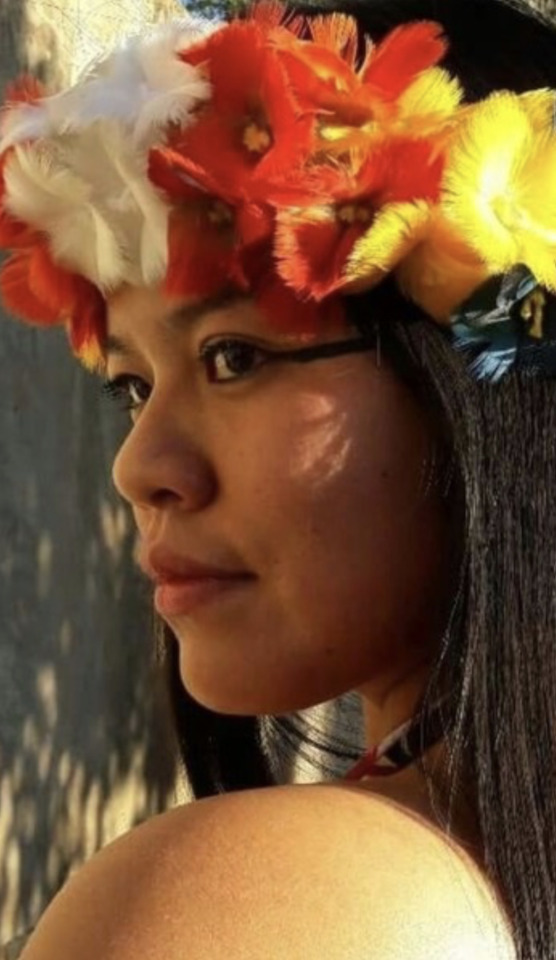
16 notes
·
View notes
Text
YAWALAPÍTI>RENATO SOARES

Os Yawalapiti* são um povo indígena que vive na margem esquerda do rio Tuatuari, um dos formadores do rio Xingu, no estado do Mato Grosso. Eles fazem parte das primeiras ondas migratórias Aruak-Maipure a chegar ao território onde mais tarde se amalgamou, em união com outros povos indígenas, o que conhecemos por sistema social xinguano, uma região onde está o Parque Indígena do Xingu, criado em 1961 pelo governo brasileiro. Dão nome ao livro Yawalapíti (Editora Origem, 2021), do fotógrafo mineiro Renato Soares.
Segundo o professor e antropólogo Adelino de Lucena Mendes da Rochaque assina um dos textos da publicação e cuja tese de mestrado na PUC-SP teve como nome Guerreiros do Norte- Memórias de um tempo histórico - Para uma etnografia Yawalapiti, de 2014, "O alto Xingu é um dos mais importantes sistemas culturais da América do Sul. Um sistema social formado por nove povos distintos: os Wauja, os Mehinako e os Yawalapiti, falantes da língua Aruak-Maipure; os Kuikuro, Kalapalo, Matipu e Nafukuá, de línguas Karib; e os Aweti e Kamaiurá , falantes das línguas Tupi." povos de mais de mil anos de história.

Já o relacionamento do fotógrafo com este povo começou há pouco mais de duas décadas, no final dos anos 1990, quando esteve pela primeira vez na aldeia Yawalapiti. Desde 2003 começou a ir anualmente ao lugar, começando no Kuarup (uma festa em homenagem aos mortos ilustres), que homenageou o sertanista paulista Orlando Villas Bôas (1914-2002). Soares passou a voltar todos os anos ao Xingu e começou a documentar os povos indígenas, iniciando um vasto registro de suas culturas e do cotidiano. Foi lá que conheceu e retratou Aritana (1949-2020), o primeiro Yawalapiti, a nascer da junção dos últimos Yawalapiti que antigamente viviam separados por aldeias. Filho de Paru desta etnia e Tempori que era Kamayurá, Aritana foi Cacique Geral das nações do Alto Xingu. Considerado uma das principais lideranças, o líder xinguano morreu em agosto de 2020, vitimado pelo vírus Covid-19.
André Leite, produtor cultural que trabalha com o fotógrafo, escreve sobre Aritana, ao lado de um belo retrato seu: "O modo contido, a voz calma e o sorriso fácil contestam a imagem do cacique como alguém que apenas ordena. Ao contrário, no Alto Xingu, são os mais generosos, prontos a atender seu povo em suas necessidades, exercendo sua autoridade de maneira pacífica e conciliadora, sem apegos materiais ou vaidades." Uma das características das fotografias deste livro é a elevação do povo indígena, fruto dessa rara constância a eles dedicada, longe das imagens de passagem que vêm se avolumando nos dias de hoje .
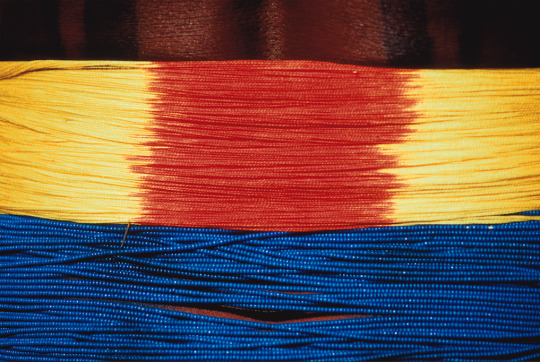
Desde os primórdios da fotografia, o exotismo ou a disposição para o registro vernacular dos indígenas atraiu os fotógrafos. No Brasil, já com as belíssimas imagens do carioca Marc Ferrez (1843-1923), quando de seu trabalho para a Comissão Geográfica e Geológica do Império, de 1875 a 1878, fotografa, em 1876, a etnia Botocudo no sul da Bahia. "De acordo com a revista Palcos e Telas, estas teriam sido as primeiras imagens dos Botocudo produzidas no país", conta a pesquisadora colombiana Ileana Padilla Ceron, no livro Marc Ferrez, uma cronologia da vida e obra (IMS,2019). [ Leia aqui review sobre a publicação https://blogdojuanesteves.tumblr.com/post/185187653321/marc-ferrez-uma-cronologia-da-vida-e-da-obra ].
Tais imagens de Ferrez antecipavam os retratos de outros grandes fotógrafos como os americanos Edward S. Curtis (1868-1952) autor do histórico livro The North American Indians ( Taschen, 2015) e cujo portfólio alcançava mais de 1500 imagens e Frank Albert Rinehart ( 1861-1928) com seu famoso Rinehart's Indians (Edição do autor, 1899) que registra o Indian Congress of the Trans-Mississippi e da international Exposition em Omaha, Nebraska, em 1898.

Yawalapiti é uma publicação mais modesta, inclusive para o tamanho do enorme acervo de Renato Soares, mas muito bem cuidado. Suas 128 páginas foram impressas em papel Eurobulk pela gráfica Ipsis, a maioria delas em cor. A edição prévia é do autor e a final em parceria com o publisher e fotógrafo Valdemir Cunha, com projeto gráfico feito pela editora e viabilizado por crowdfunding. Em parte, o tamanho que poderíamos chamar de médio, vem ao encontro do autor, cujo interesse é publicar todas as etnias brasileiras, na então inaugurada Coleção Ameríndios do Brasil.
Renato Soares, que também assina como indigenista, trabalha constantemente no projeto Ameríndios do Brasil - uma ambiciosa documentação fotográfica das mais de 300 etnias e suas 274 línguas diferentes. Segundo os editores, trata-se do resgate de personagens ancestrais que fazem parte das raízes do povo brasileiro." Seu trabalho figurou em importantes exposições como "O último Kuarup" no Museu de Arte de São Paulo (MASP) de 2006, e na mostra itinerante "A última viagem de Orlando Villas Bôas" que percorreu 12 capitais brasileiras. Publicou seu primeiro livro Krahô, os filhos da terra (Ed. do autor, 1995) e participou de outros como Museu de Folclore Edison Carneiro -Sondagem da Alma do Povo ( Ed.Melhoramentos, 2005), em parceria com a fotógrafa inglesa radicada no Brasil, Maureen Bisilliat.
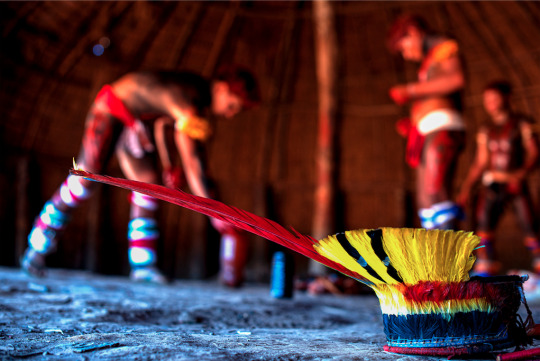
O repertório imagético indígena brasileiro conta com inúmeros autores e publicados de diferentes maneiras. Um dos principais, é sem dúvida Xingu, Território Tribal (Ed. de Cultura, 1990) de Maureen Bisilliat com participação de Cláudio Villas Bôas (1916-1998) e Orlando Villas Bôas. Faces of the Rainforest (Power House Books, 2002) do paranaense Valdir Cruz, focado nos Yanomami, com textos do antropólogo americano Kenneth Good, conhecido por seu trabalho com esta etnia e Vicki Goldberg, crítica de fotografia e historiadora da fotografia americana, publicado no Brasil como Faces da Floresta ( Cosac & Naify, 2004).
Dificil também não lembrar de outros autores como a suíça radicada no Brasil, Claudia Andujar, e seus livros Marcados (Cosac & Naify, 2009) [ leia aqui review https://blogdojuanesteves.tumblr.com/post/131630843276/marcados-claudia-andujar ] e Claudia Andujar A Luta Yanomami (IMS,2018) [ leia aqui review em https://blogdojuanesteves.tumblr.com/post/182426680951/claudia-andujar-a-luta-yanomami ] e A vulnerabilidade do ser ( Cosac & Naify, 2005); ou das paulistas Rosa Gauditano com a publicação Índios os primeiros habitantes ( DBA, 1999) e Rita Barreto com seu livro Kuikuro (Ed.Origem,2019) [leia review aqui em https://blogdojuanesteves.tumblr.com/post/183706430191/4-in%C3%A9ditos-da-editora-origem-ana-carolina ] e do paraense Rogério Assis, com seu Z'Oé ( Editora Terceiro Nome, 2013), que mostra dois encontros do fotógrafo com esta etnia, um em 1989 e outro em 2009, com texto da antropóloga Dominique Tilkian Gallois, professora da Universidade de São Paulo (USP), considerada uma das maiores estudiosas sobre os usos e costumes de várias etnias da região e, especialmente, dos Zo’é; e uma apresentação de Márcio Meira, presidente da Funai no período da segunda viagem do fotógrafo.
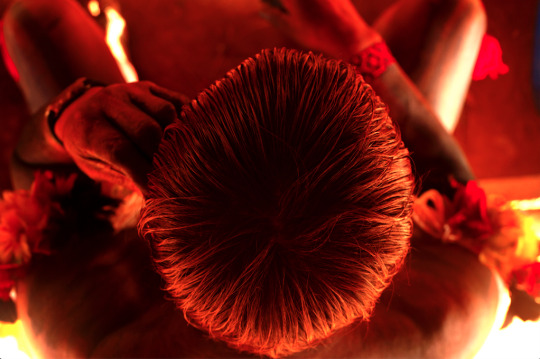
O primeiro encontro registrado entre os Yawalapiti e a civilização ocidental, escreve Adelino Mendes, ocorreu durante a segunda expedição do médico, antropólogo e etnólogo alemão Karl von den Steinen (1855-1929), no ano de 1887. "Nesse tempo estavam localizados nos pantanais do baixo curso do rio Tuatuari, em uma área mais elevada..." reconhecida pelos indígenas de hoje como localização de sítios importantes. "Eles mencionam este tempo como sendo o início de seu declínio cultural, o que mais tarde culminou no total desaparecimento de suas aldeias na décadas de 1930 e 1940. Antes de localizados pela expedição de Steinen, suas lembranças remontam tempos antigos, localizando-os mais ao norte em aldeias próximas da confluência dos rios Kuluene e Batovi, chamado de rio dos Yawalapiti, nome que significava Aldeia dos Tucuns e é usado como denominação, conta o antropólogo.
Renato Soares, produz imagens poéticas de uma etnia idealizada em cores e formas exuberantes, mas ao mesmo tempo fotografias percucientes e necessárias. Se por um lado vemos nos livros Marcados e Faces da Floresta uma visão mais complexa dos indígenas e seus problemas, em Yawalapiti, a estética, as questões anímicas e numinosas são preferenciais, embora guardem com significância importantes registros culturais. Entretanto, não se trata de cotejar o documental restrito com a arte, mas de ocupar um espaço que produza a necessária consciência da sociedade sobre os horrores que estão sendo praticados contra as etnias brasileiras por diferentes governos, em especial pelo atual e seu projeto de extermínio dos nativos brasileiros. O livro então cumpre os dois papéis, fazendo com que a arte encontre sua forma documental e o fomento desta necessária e urgente discussão
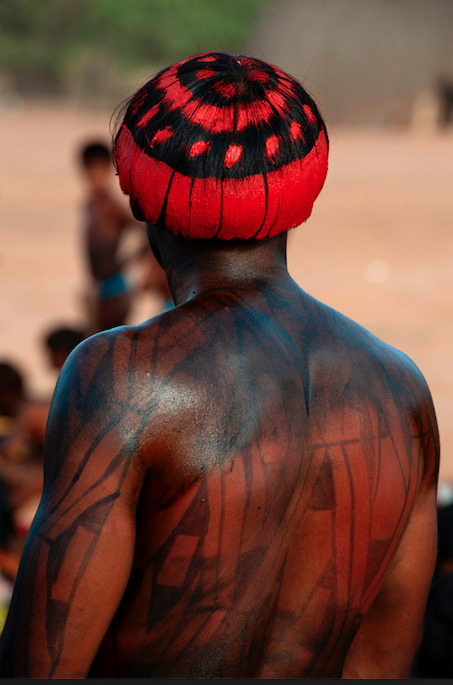
*São usadas as grafias Yawalapiti e Yawalapíti, oriunda da tradição oral cuja sílaba tónica é acentuada.
Imagens © Renato Soares Texto © Juan Esteves
Conheça mais sobre o trabalho de Renato Soares em
http://www.imagensdobrasil.art.br/
Conheça outros livros da editora Origem em
www.editoraorigem.com.br
* nestes tempos bicudos de pandemia e irresponsabilidade política com a cultura vamos apoiar artistas, pesquisadores, editoras, gráficas e toda nossa cultura. A contribuição deles é essencial para além da nossa existência e conforto doméstico nesta quarentena *
3 notes
·
View notes
Note
Hi Cat & Mouse~! Is Lucy Alves indigenous? I can only find that she is Brazilian. And could you suggest some indigenous or afro Brazilian fcs that fit her vibe? I would greatly appreciate it. Thank you and be well!
Hey there! Lucy is indigenous although I'm not sure of her indigenous nation/tribe, HERE she says that “more than ever I see myself as a black, indigenous woman” - thank you to @tonkinwrites for the link and Bru has also made some amazing gif packs for her too!
Pathy Dejesus (1977) Afro Brazilian.
Taís Araújo (1979) Brazilian [African, Austrian, Portuguese, possibly other].
Juliana Paes (1979) Brazilian [Portuguese, African, Unspecified Indigenous], some Syrian/Lebanese.
Raica Oliveira (1984) Brazilian [Portuguese, African, Unspecified Indigenous, possibly other].
Débora Nascimento (1985) Brazilian [Black / Italian and Unspecified Indigenous].
Jessica Córes (1990) Afro Brazilian.
Lais Ribeiro (1990) Brazilian [African, Unspecified Indigenous, Portuguese].
Thalissa Teixeira (1992/1993) Afro Brzilian / English.
Cunhaporanga Tatuyo (1998) Tatuyo.
Diamantha Aweti Kalapalo (?) Kalapalo.
Romanã Waiãpi (?) Waiãpi.
Here you go!
7 notes
·
View notes
Text
Linguisticamente, temos a relação de ‘its’ como prefixo na conjugação de determinados verbos na terceira pessoa do singular, podendo aparecer também na forma reduzida ‘i’. Por exemplo, itsahujehetilü quer dizer ‘ele está vulnerável aos itsekeko porque desejou algo que não foi satisfeito no momento’, ou itsahakugu significa ‘o arco dele’. Temos, além disso, itaginhu e ingunkgingu, cujas respectivas traduções são ‘ele fala’ e ‘ele pensa’ – as formas dos verbos no infinitivo são respectivamente kitaginhu (falar/conversar) e kingunkgingu (pensar). A título de diferenciação comparativa, os mesmos verbos, por exemplo, na primeira pessoa do singular conjugados no mesmo tempo verbal, são respectivamente ukahujehetilü, uitaginhu e uingunkgingu, onde o ‘u’ indica o pronome da primeira pessoa do singular de maneira abreviada, pois a palavra para ‘eu’ é ‘uge’.
- J. Veridiano, Xamanismo Kalapalo
0 notes
Photo

Oi gente, tô aqui reflexiva e vou partilhar uma história com vocês.
Ahualo Kalapalo, mais conhecido como César, indígena, 41 anos, sem outras doenças, trabalhador da cidade de Canarana. Há 1 mês voltou para sua aldeia para se proteger do coronavirus que começava na cidade. Sua família mora no Kuluene, aldeia no Alto Xingu.
No dia 24/06 a equipe de saúde entrou na aldeia kuluene para avaliar os diversos casos de gripe que estavam surgindo. Há 3 semanas havia sido relatado o primeiro caso de coronavirus dentro do Xingu.
César estava gripado, com tosse, febre, cansaço e fraqueza, mas dizia que "o pior havia passado". Estava andando, conversando, lúcido. Sua pressão estava 120x80, frequência respiratória 20irpm, saturação de O2 55%, pulmões limpos. Seu teste para coronavirus deu positivo.
Eu desesperada, ele tranquilo. Peço que vá para o hospital, mas César diz que não. "Na cidade os médicos estão matando a gente, não quero ir pro hospital morrer. Vou ficar na aldeia."
Peço então que César vá até a escola para fazermos oxigênio nasal, mas é perigoso sair de casa quando se está doente. "Quando o corpo está fraco pode pegar feitiço, não é bom sair de casa"
Combinamos de trazer o oxigênio para casa do César. Fazemos oxigênio por cateter nasal a 4l/min e em 3 horas sua saturação atingiu 98%. Durante essas 3 horas começamos a conversar:
-César, estou preocupada. Esse coronavirus pode ficar muito grave em algumas pessoas. Com oxigênio baixo assim seus órgãos podem parar de funcionar e você pode até morrer.
- mas eu sei porque eu fiquei doente assim doutora
- por quê, César?
- eu cortei a árvore e ela não gostou, eu senti.
Eu paro, penso.
- acho que é por isso que estamos todos doentes, César.
Deixo César dormir e combino de retornar pela manhã.
Na manhã do dia seguinte, após uma noite inteira sem suplementação com oxigênio, César volta a saturar 60%. Em sua casa estão todos os familiares da aldeia. César diz que é difícil convence-los de que é perigoso estar por perto agora, todos querem ir visitá-los para saber como está sua doença. Alguns estão vindo até de outras aldeias para fazer visita.
O isolamento domiciliar é uma grande dificuldade. Os indígenas moram em casas sem quartos, sem divisões. Em cada casa chegam a morar até 15 pessoas, compartilhando redes, cuias, copos, talheres. Normalmente em uma aldeia todos são familiares, e quando um fica doente todos vem para apoiar.
Hoje o pajé vai chegar para ajudar a curar a doença espiritual de César. Só depois a equipe de saúde pode fazer oxigênio.
Durante a tarde fazemos mais 2 horas de oxigênio, atingindo 90% de saturação. César diz que cansou do oxigênio e hoje não vai mais usar.
No dia seguinte a saturação se mantém em torno de 60%. César sente-se melhor, o pajé conseguiu recuperar seu espírito na árvore que foi cortada. Está com fome.
Na hora do almoço retorno e ele não está bem, não consegue respirar. Está com febre de 38.5, saturando 55%, crepitações em dois terços do pulmão direito e metade inferior do pulmão esquerdo. Ofereço retirada para hospital, César se nega prontamente. O oxigênio eu consigo convencê-lo. Conectamos o concentrador de oxigênio e deixo com fluxo de 3l/min.
Retorno após 2hrs e César retirou o cateter, não consegue mais usar aquilo. Sente que o aparelho está enfeitiçado e que os vírus circulam pelo cateter, "eu consigo ouvir doutora". Converso com César novamente sobre os riscos do oxigênio baixo.
- eu entendi doutora, mas agora vou deixar a natureza me curar.
É difícil, me preocupo, converso sobre a gravidade com os familiares. Todos entendem, mas a decisão é do César. Ele não quer.
Esse momento e sempre difícil, mas compreendo e combino que retornarei 2x ao dia.
Na manhã seguinte, para minha surpresa, César está sentado, comendo beiju, saturando 70%. Seu filho conta que na noite anterior chegou a 80% de saturação.
Fico feliz, ofereço oxigênio novamente
- eu nao quero doutora, vou ter que desenhar os motivos?
- não César, vamos aguardar a natureza
À noite retorno e César está melhor, saturando 80%.
Na manhã do quinto dia de acompanhamento César está saturando a 92%, se alimentando e não sente mais cansaço. Sua taquipneia melhorou e os estertores ainda se mantém, mas só em bases.
Daphne Lourenço, médica de família e comunidade atuando no DSEI Xingu.
Arte de Zina Leal
1 note
·
View note
Photo


The man on your left is Percy Fawcett - archaeologist and world famous explorer, known best for his adventurous lifestyle and his mysterious disappearance in 1925. His life and disappearance served as an inspiration for many characters, books and film. Indiana Jones was modeled after him.
The man on your right is Dr. John Hemming who says Fawcett can go fuck himself.
Percy Fawcett was a British geographer and explorer best known for his disappearance in 1925 while searching for an ancient lost city he commonly referred to as 'Z'.

Fawcett was a former lieutenant and captain of an artillery, joined the Royal Geographical Society to study surveying and mapmaking, and worked for the British Secret Service in North Africa. He served for the War Office as a Major.
He was also friends with writer Sir Arthur Conan Doyle who you may know as the creator of Sherlock Holmes. Fawcett served as an inspiration for Doyle's book, "The Lost World".

The timeline for his disappearance:
1925: Fawcett sets out for his last known expedition to find the lost city of Z. He left specific instructions stating that if the expedition (that consisted of himself, his son, and his son’s friend) did not return, NO rescue expedition should be sent. (This request was later ignored as various rescue/recover expeditions were conducted for years to come; the first in 1927 and the most recent in 2003)
On April 20th, 1925 - His final expedition departed from Cuiabá, Brazil. It's a geographical centre of South America. His group was joined by 2 Brazilian laborers, 2 horses, 8 mules, and a pair of dogs.
On May 29th, 1925 - He sends out his last communication from the expedition in the form of a letter to his wife. He wrote that he was ready to go into unexplored territory with only Jack (his son) and Raleigh (his son's friend).
He sent this letter out from a major camp he created called Dead Horse Camp. Here's one problem: He sent out two letters from this camp - and in both letters he wrote different coordinates as to where his location was. To his wife, he gave the coordinates: (11°43′S 54°35′W) and to The North American Newspaper Alliance he gave the coordinates (13°43′S 54°35′W). Here’s a satellite image of what that would look like.
Nobody knows what happened to him and his crew after that.
The Theories:
Naturally, tons of theories were created after his disappearance.
His fellow explorer buddy (and then later, war hero) Henry Costin - who had joined Fawcett on expeditions before - theorized that he succumbed to starvation or exhaustion. He claimed he had good relations with the natives and seriously doubts they killed him.
The Villas-Bôas / Kalapalos Tribe Murder Theories -
Orlando Villas-Bôas, a Brazilian pioneer for indigenous activism (who I’d also recommend reading about), received skeletal bones that were alleged to have been Fawcett and had them analysed scientifically. Apparently, the 'murderer' of Fawcett explained to him that the trio lost the gifts they were to bring to the native tribes in the river. Continuing without gifts was a serious breach of protocol, they did so anyways, and the two younger men were thrown into the river during an encounter with the Kalapalo tribe while Fawcett (being older) was given a proper burial.
A Kalapalo chief called Comatzi told his people how the unwelcome strangers were killed.
Comatzi's predecessor, Kalapalos Chief Izarari, had told them he had killed Fawcett and his son Jack, by shooting them with arrows after Fawcett attacked him and his people when they refused to give him guides and porters to take him to their Chavante enemies. Raleigh had died from fever before they trio had reached the Kalapalos.
A slightly different variation was told by Villas-Bôas, stating that Chief Izarari told him that he had killed all three white men with his club the morning after Jack allegedly consorted with one of his wives. He also claimed that Percy Fawcett had slapped him in the face after the chief refused his demand for canoes and porters to continue his journey.
The Kalapalo also have an oral story of the arrival of three explorers: The three went east, and after five days the Kalapalo noticed that the group no longer made camp fires. They were killed by a violent neighboring tribe.

Later, scientific analysis determined the bones given to Villas-Bôas weren't Fawcett. A Kalapalo elder in an interview in the 1990s also denied that the bones were Fawcett's and that the tribe had nothing to do with his disappearance.
Who the bones belong to, and where the remains of Fawcett and his crew are, remain a mystery to this day.
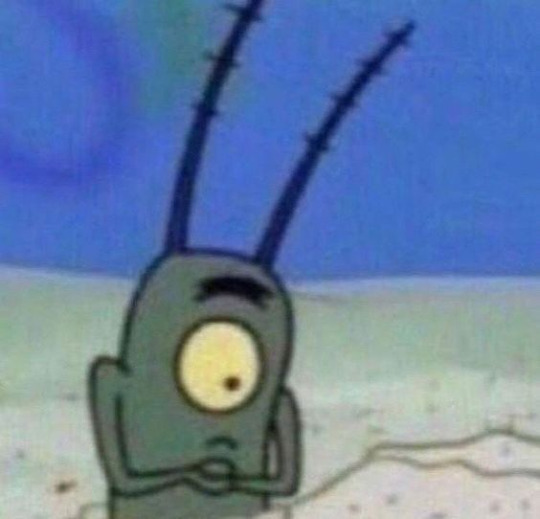
Some of the other theories:
One theory, based on Fawcett's private letters, suggested that Fawcett never intended to return to Britain. Instead, he meant to found a commune in the jungle based on theosophical principles and the worship of his son, Jack.
Another theory, closely related to the previous one, was that Fawcett was targeted by an erotic siren who draws white men into the jungle.
Now would be a good time to mention that his older brother was an occultist and friend of Helena Blavatsky, co founder of the Theosophical Society. In fact, he helped her while she was creating The Secret Doctrine.
Here is a link to the PDF version of The Secret Doctrine and here are two links to buy a physical copy of volume one and volume two.
Fawcett’s wife also believed that the men were still alive, and claimed to have received a psychic message from her husband in 1934. She remained believing that they were alive and would come home until the day she died.
* Psychic Geraldine Cummins also reported receiving a telepathic message from Fawcett in 1936, and received four more communications until 1948, when he told her that he was dead.
“Cummins said, the Englishman had found the relics of Atlantis in the jungle but was now ill and semiconscious.”
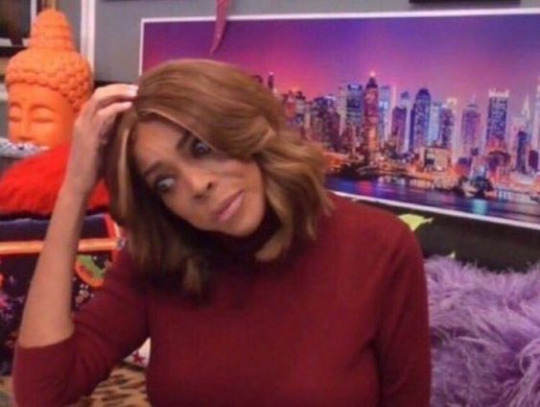
The other conclusions draw about what happened include:
He was eaten by jaguars
He was still alive and was living off the land
He was still alive, found the lost city, and spent the rest of his days there
He was alive but a prisoner of a tribe
He became the chief of a cannibalistic tribe
He became a victim of amnesia, malaria, parasitic infections, you name it
He found the lost city and it was full of beautiful red headed aliens.
Him and his son were worshiped as gods in Roncador.
He was killed and had his head shrunken.
** Here are two different photos of the head that’s alleged to belong to Fawcett. Due to its disturbing nature it will be up to you to decide if you want to see these photos.
For the general public - Fawcett served as an exciting symbol of adventure and mystery. He's seen as this iconic explorer, an inspiration for many novels and characters - including Indiana Jones. At one point, a fictionalized version of Fawcett actually aids Indiana Jones in the 3rd book of the original series. His life was admirable and his disappearance was called, "one of the greatest mysteries of the twentieth century".
For experts....his reputation and life's work is much different.
Dr. John Hemming is a well established, highly experienced historian, explorer, and expert on Incas and indigenous peoples of the Amazon basin. His record is honestly too long to get into but just know that our knowledge of indigenous peoples from South America probably wouldn't be as extensive as it is without him. His books are still used as references, his work is praised by Brazilians and Europeans, and if you want to learn anything about the different tribes in South America - he's your guy.
His take on Fawcett? Well almost a century after Fawcett’s disappearance and presumed death Dr. Hemming was like
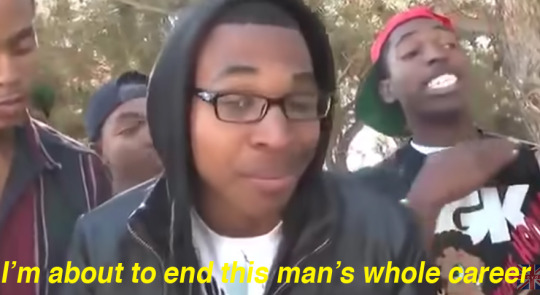
"Greatest explorer? Fawcett? He was a surveyor who never discovered anything, a nutter, a racist, and so incompetent that the only expedition he organised was a five-week disaster. Calling him one of our greatest explorers is like calling Eddie the Eagle one of our greatest sportsmen. It is an insult to the huge roster of true explorers. Had the advertisement been about a soap powder, it would fall foul of the Trade Descriptions Act."
That’s a god damn direct quote from the VERY first paragraph of an article John Hemmings wrote about Fawcett in 2017.
In fact the tagline for the article was:
"A new Hollywood film hypes Percy Fawcett as a great explorer. In fact, he was a racist incompetent who achieved very little."
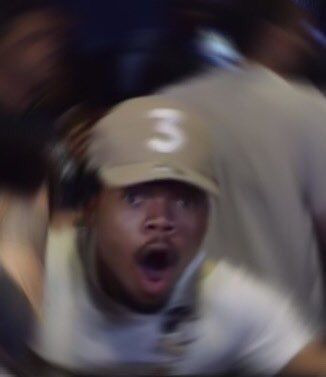
Before his disappearance, Faucett was known for making....odd claims.
"While on the expedition in 1907, Fawcett claimed to have seen and shot a 62-foot (19 m) long giant anaconda, a claim for which he was ridiculed by scientists. He reported other mysterious animals unknown to zoology, such as a small cat-like dog about the size of a foxhound, which he claimed to have seen twice, and the giant Apazauca spider [a mythical GIANT spider that turns its victims black as it poisons them]."
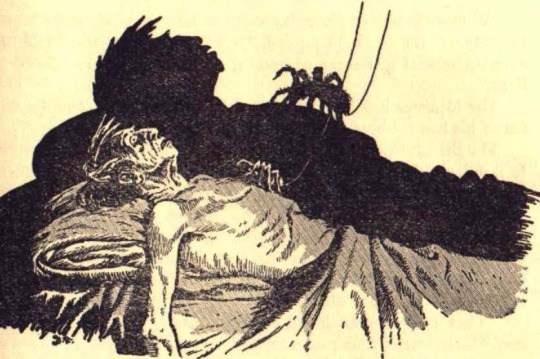
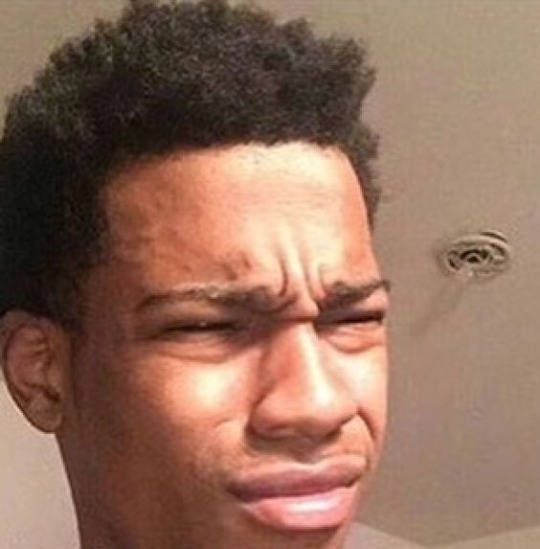
Some other incredible quotes from the article (that I highly encourage reading) include:
"He [Fawcett] emerges from it as a typical Edwardian colonial officer — friendly with South Americans but looking down on them, appalled by the cruelty at some rubber stations, full of gossip about life on this remote but boom-rich backwater, and uninterested in nature apart from banalities about dangerous snakes and irritating insects."
"The Maxubi were friendly and hospitable, but continuing on a forest trail Fawcett met another tribe (probably Sakurabiat) to whom he took a violent dislike. When one aimed a drawn bow at him, Fawcett shot the man with a Mauser revolver — absolutely forbidden by Brazil’s Indian Service. He described them as he imagined Neanderthals or Piltdown Man to have looked: ‘large hairy men, with exceptionally long arms, and foreheads sloping back from pronounced eye ridges… villainous savages, hideous ape men with pig-like eyes.’ No Amazonian Indian has body hair or looks remotely like this — I know, because I have spent time with over 40 different peoples. “
“These two groups, and the two on the Heath, were the only tribal people seen by Fawcett. He liked two of them. So it was strange that he wrote racist gibberish that ‘there are three kinds of Indians. The first are docile and miserable people, easily tamed; the second, dangerous, repulsive cannibals very rarely seen; the third, a robust and fair people, who must have a civilised origin.’ "
"He now took two inexperienced ex-public schoolboys, his son Jack and Jack’s friend Raleigh Rimmel."
"All expeditions in the past four decades had brought plenty of presents such as machetes, knives and beads. Fawcett had none. He committed other blunders that antagonised their hosts [the natives]. So it was only a matter of days before they were all dead."
"Such was the sad tale of this incompetent, whose only skill was in surveying."
"Then it was forgotten until 2009 when David Grann, a talented writer, published The Lost City of Z. Unfortunately, Grann hyped the story out of all proportion and wrongly depicted Fawcett as a great explorer. As he cheerfully admitted, Grann had no experience of rainforests. But he let his imagination run riot, with pages about ferocious piranhas, huge anacondas, electric eels (actually a fish that has never killed a man), frogs ‘with enough toxins to kill 100 people’, ‘predator’ pig-like peccary, ‘sauba ants that could reduce the men’s clothes to threads in a single night, ticks that attached like leeches (another scourge) and the red hairy chiggers that consumed human tissue. The cyanide-squirting millipedes. The parasitic worms that caused blindness…’ and so on. Everyone who know tropical forests, including me, knows that almost every word of this is nonsense."
"Grann wrote that, as an author, he would have been lost without my three-volume, 2,100-page history of Brazilian Indians and five centuries of exploration. He quotes quite often from my books. So he had no excuse for describing Fawcett’s brief visits to three indigenous villages as the ‘discovery of so many previously unknown Indians’, from whom ‘he learned to speak myriad indigenous languages’, and adopted ‘herbal medicines and native methods of hunting [so that he] was better able to survive off the land’.

Dr. Hemmings also refers to the colonizers who enslaved the natives in the area as 'thugs'

and fucking ended the article with
" Hollywood believed everything Grann wrote, and then hyped it up more. ... But I could recommend scores of writings by real explorers."

#long post#history#historical#archaeology#mysteries#unsolved mysteries#education#TIL#Percy Fawcett#Dr. John Hemming#Indigenous History#this is a long post but it's so worth it! I spent all day yesterday researching about it#the ENERGY
4 notes
·
View notes
Photo

Noite de Natal Família Kalapalo https://www.instagram.com/p/B6ehvYhH3wu/?igshid=13a249usdsulx
2 notes
·
View notes
Text
Brazil's Indigenous Gaming Scene Is On the Rise
Featuring a native Brazilian as its protagonist, Araní takes a big step toward making gaming more authentic and inclusive.

It’s a steamy night in the jungle. A huge one-legged creature with a detached jaw roars in the face of the protagonist, a young Indigenous woman. She grips her double-edged spear in both hands, readying herself for a fight.
This is a scene from Araní, a Brazilian game currently in development. The game is named after its lead character, an Indigenous warrior of the Sun Tribe intent on saving her people from a mysterious, mythological power. It was announced in 2018 by Diorama Digital, a studio based in Pernambuco, a state in Northeastern Brazil.
Brazil is the fifth-largest country in the world and is home to many different cultures. There are those hailing from the favelas seen in movies like 2002's City of God, and the Carnival parties and tropical bossa nova which are familiar to tourists, but it is the country’s many Indigenous peoples and traditional communities that caught the attention of the team at Diorama.
The country is also home to 850,000 Native peoples, living in 300 communities. They make up 1.1 percent of the country's 213.3 million inhabitants, according to the Brazilian Institute of Geography and Statistics.
During the game’s planning, game developer Everaldo Neto says Araní’s willpower made her the obvious choice for the protagonist. “Everything happened in a very organic manner—it was almost like she picked us, and not the other way around,” he says. “We knew we needed a strong woman who was small considering the scale of her challenges, but huge in her deeds.”
The gaming scene in Brazil’s Indigenous communities is surging too. For example, during 2020, in the middle of the pandemic, a Free Fire tournament named the Indigenous Villages Cup saw 288 “guilds,” each made up of Indigenous gamers, participate. Among the ethnicities were Guaraní, Karajá, Xakriabá, Kalapalo, Kaigang, Kaiowá, Amondawa, and Xokleng peoples, just to name a few.
WIRED spoke to three female Indigenous gamers to learn more about their experiences in Brazil's gaming communities, and all three explained that some players considered their presence unusual, while others even doubted their Indigenous origins or heritage.
Continue reading.
#brazil#environmental justice#politics#indigenous rights#gaming#games#videogames#brazilian politics#arts#culture#mod nise da silveira#did the alt description for the image work?#currently using tumblr's beta version of post editor on pc
130 notes
·
View notes